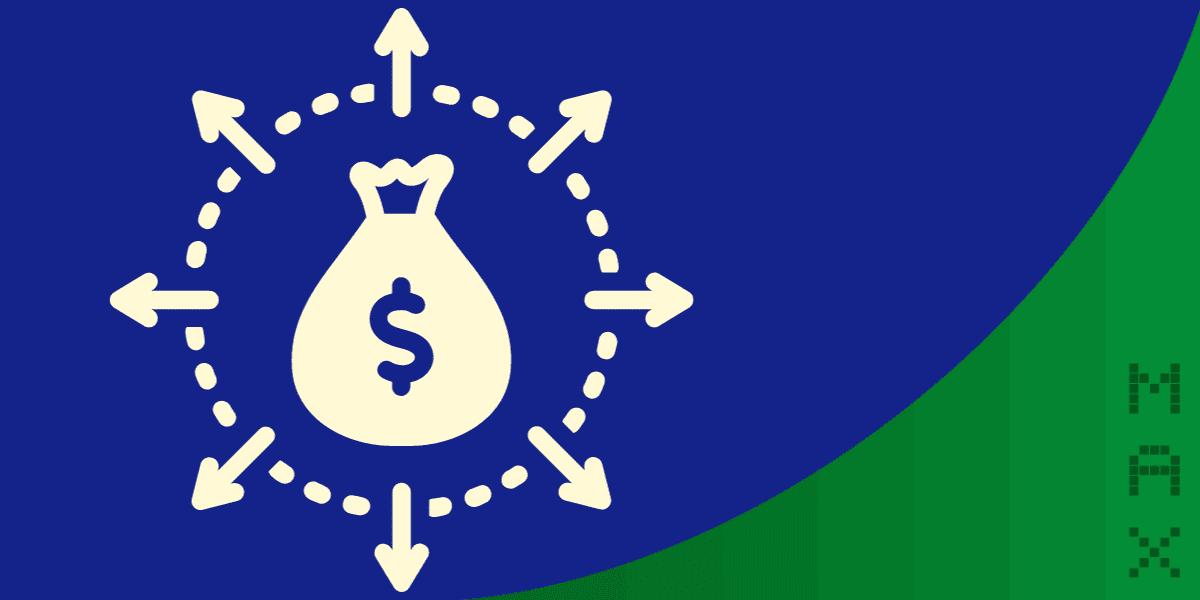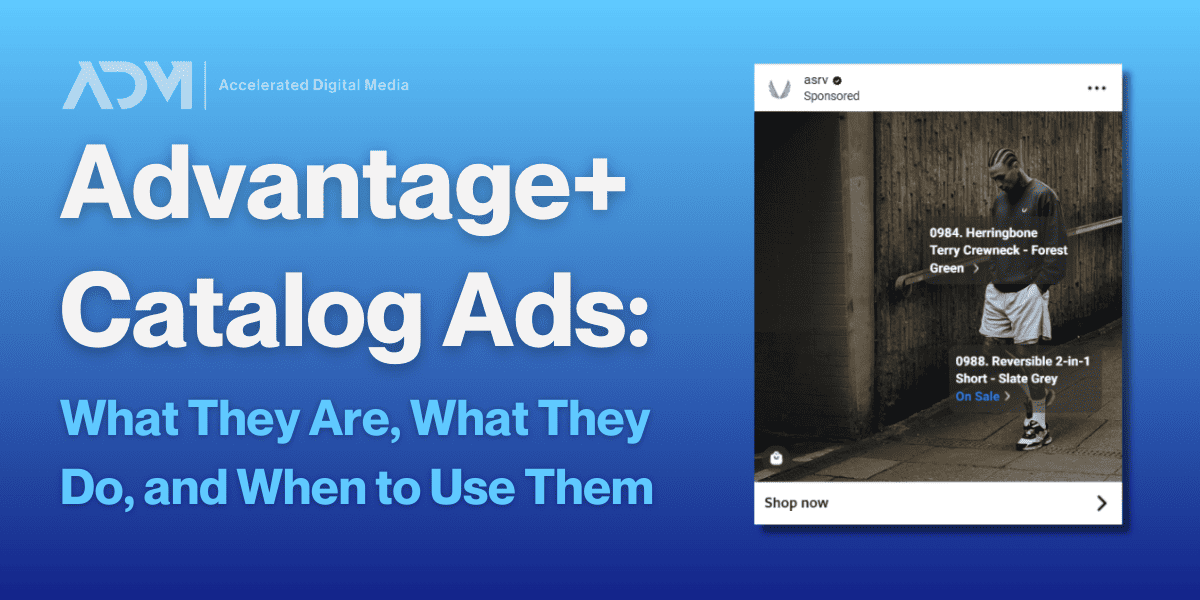Google Ads’ Performance Max campaigns have been a pretty revolutionary tool for eCommerce brands. Their AI-powered targeting and multi-format delivery make for a potent, effective way of reaching new customers across the Google ecosystem. While they may seem like an approach that takes a lot of time and intent out of the campaign building process, they actually require plenty of nuance to deliver to their full potential.
Because of the importance and complexity of these campaigns, ADM has embarked on a blog series that focuses on helping you get the most out of them. We’ve already written about feed optimization and campaign segmentation. This time around, we’ll be diving into three more extremely important areas of Performance Max: budgets, bid strategy, and inventory. Let’s dive in!
Assigning Your Performance Max Budget
As with any Google Ads approach, there is no blanket rule for determining how much budget should go to Performance Max. Ultimately, you should invest your spend where it is most likely to help you reach your distinct business goals.
For instance, if you are looking to maximize your Revenue while maintaining a specific return on ad spend (ROAS), ADM’s recommendation would be to invest heavily in your Performance Max campaigns so long as they continue to deliver below that ROAS number and drive Revenue more effectively than other tactics (ie: Non-Brand Search, Video, or Demand Gen) are displaying.
Still, it’s important to be flexible and prioritize spend based on opportunity. If you are planning a sale at the end of a month, don’t set your budgets to spend the same amount every day for the whole month. Hold a little bit back in the earlier part of the month, push harder during sale time, and then pull back again once the sale ends.
The same principles can apply to tactics. For instance, certain campaign types—like Demand Gen—might apply better to a new product launch than Performance Max. If your goal is to put that new product on peoples’ radar, spend can be moved over to that effort for a time before shifting back to Performance Max to then sell more the product.
How Frequently to Check/Adjust Performance Max Budget Pacing
Budget management is fundamental to good search engine marketing, but automated campaigns like Performance Max are a bit different than traditional search campaigns. It can be tempting to make adjustments every day, but you have to remember that automated campaigns depend on machine learning. Too much over-engineering can prevent algorithms from correctly learning how to deliver, which can throw performance off the rails.
Because of this, ADM recommends checking Performance Max campaigns daily, but to only make adjustments once or twice per week per week. While exceptions can always apply, every 3-4 days is seemingly the sweet spot if you want to avoid derailing results through excessive tinkering.
It’s important to mention that the “twice per week” strategy is a valuable approach to staying aware of seasonality. Let’s take an apparel company as an example: Their shorts consistently outperformed the set goals for several weeks, but eventually started to show some performance fluctuations. Because we had been monitoring and adjusting campaign budgets twice per week already, we were able to catch seasonal trends immediately when we saw performance in a shorts campaign starting to slow and ensure the campaign didn’t run for an extended period at a lower efficiency.
Consequently, as shorts performance was slowing, we saw tights and long sleeve tops gaining momentum—so we were able to shift budget to reflect the changes in performance right away. By checking and adjusting campaigns at this frequency, seasonality can become a science rather than a guessing game.
Choosing a Performance Max Bid Strategy
Choosing a Performance Max bid strategy is going to really come down to what matters most to your business. At ADM, we primarily opt for one of the two main options: a Maximize Conversions strategy (which you can elect to pair with a CPA target) or a Maximize Conversion Value strategy (which can be paired with a ROAS target).
For most applications—and particularly for eCommerce—the focus will be on revenue. That’s why we typically recommend using the Maximize Conversion Value strategy paired with a tROAS goal. When launching a new campaign, however, we recommend starting with a Maximize Conversions strategy to help prime the algorithms. Google needs to see at least 15 conversions before it can effectively start optimizing toward more specific tCPA or tROAS goals.
Your bid strategy should reflect the primary goal of your PMax campaign, so there may be a balance to maintain between volume and efficiency. Your spend can be significantly influenced by the targets you employ. tCPA and tROAS have thresholds where further optimization may result in diminishing returns. Once Google anticipates that acquiring conversions will become more challenging, such as when CPAs exceed your threshold or the revenue from additional conversions is unlikely to cover the cost of incremental conversions, these strategies will limit volume.
Tailoring Your tCPA and tROAS Goals
To set your tCPA or TROAS targets appropriately, you must able to compare performance over time. For example, your goal might be to maximize revenue while targeting a ROAS of 2 in a given campaign. Over the prior seven days, your campaign ROAS had fallen to a 1.95, but had been at a 2.15 a week earlier. Because efficiency has dipped, an appropriate response might be to increase your ROAS target from a 2 to a 2.1.
When making adjustments to daily budgets or bid strategies, moving too swiftly can have detrimental effects. A major adjustment can actually send your campaign’s bid strategy back into “Learning” mode, in which case you will likely see performance plummet. ADM’s recommendation is to keep adjustments between 10% and 15% to keep from overwhelming the machine learning that powers your campaign.
Consequently, you may encounter situations where a campaign performs exceptionally well but fails to exhaust its daily budget. In such cases, you’ll need to either lower your tROAS target or increase your tCPA target to “loosen up” and allow the campaign to spend more. It’s crucial to note this when aiming to scale or build upon the success of a campaign.
Pro-Tip: If your campaigns are hitting or surpassing the bid strategy targets but are limited by the daily budget, you should scale both to increase spending while still improving performance. In contrast to the previous scenario, this may involve raising your ROAS target or lowering your CPA target while simultaneously increasing the budget. You can think of this as moving along both the X and Y axis so that you’re moving twice as quickly to reach the point of maximum efficiency.
Running Performance Max With the Pros
Performance Max may seem like a simple set-it-and-forget-it campaign type, but as demonstrated by the above: There is a lot of complexity to navigate if you want to get the most out of them. At ADM, we commit to learning the ins-and-outs of every new Google Ads innovation the second it becomes available to the public, which gives our clients a leg up on their competitors. This approach is why Google itself called out our work when commenting on early adoption and effective use of Performance Max.
To learn more about how to use Performance Max the right way, check out our other blogs on this topic or reach out to our experts today.




